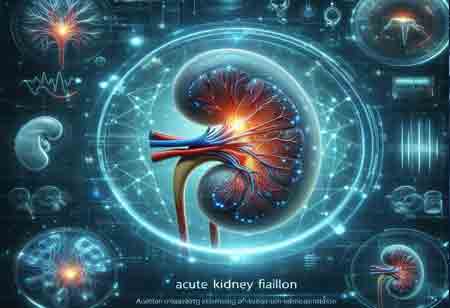New Horizons in Post-Acute Care: Trends Shaping the Future of Recovery
Post-acute care trends emphasize value, patient-centeredness, and technological innovation, necessitating collaboration and innovation to improve the quality of care and recovery and address challenges and opportunities.

By
Medical Care Review | Wednesday, March 19, 2025
Stay on top of your health and well-being with exclusive feature stories on the top medical clinics and treatment centers, expert insights and the latest news delivered straight to your inbox. Subscribe today.
Fremont, CA: Post-acute care (PAC) has emerged as a vital component within a continuously adapting healthcare framework. It delivers essential services to individuals recuperating from hospital stays or dealing with chronic illnesses. Several trends are influencing the PAC landscape, such as modifications in payment structures, technological advancements, and a shift toward value-based care.
Changes in the payment models and accountable care organizations have led to value-based care, slowly transforming post-acute care. This system encourages service providers to offer efficient care so that they remain responsible for the whole care episode. It promotes better coordination among healthcare providers, improving care coordination and patient experience.
Where value has been emphasized, it has resulted in a shift within post-acute care services, with more patients being discharged to home health care rather than skilled nursing facilities. This can be very cost-effective for this patient and accords with the patient's desire to receive care in a familiar environment. Advancements in telehealth and remote monitoring support this trend, enabling the healthcare provider to provide high-quality care at home while reducing the risk of hospital readmissions through interventions presented in a timely fashion.
Patients' need for informed and participative care in making decisions about their health conditions drives the adoption of patient-centered care in post-acute settings. In this direction, service providers are changing their methods and implementing specific care plans considering patients' needs, preferences, and goals. Involving patients and families in choices about care improves patient satisfaction and outcomes. There is an increasing tendency to include patient-reported outcomes and feedback in service assessments, thus bringing quality services.
The healthcare industry has rapidly changed with the use of technology. EHRs and health information exchanges improve communication and the availability of patient information. Connectivity becomes more crucial in the effectiveness of care coordination or error prevention. New technologies, such as AI or machine learning, are currently applied in post-acute care that can analyze trends and optimize decisions to aid patient care.
The face of work and workforce within post-acute care continues to change. Due to this demographic shift in the age factor coupled with increased requirements for state-of-the-art care, there is an increased demand for highly skilled professionals in PAC. However, the industry also deals with personnel-related pressures, including shortages of good-quality nurses and therapists. Organizations invest in quality training, mentorship, and strategies for retaining skilled personnel for such issues. Positive work culture and professional development form an essential attraction and retention tool in the highly competitive PAC landscape.
Regulation of post-acute care continues by making the quality metrics and patient outcomes more transparent. The Center for Medicare and Medicaid Services develops measures that hold providers accountable and pressure them to improve. In post-acute care design, the social dimensions of health, or SDOHs in changing healthcare, consider socioeconomic status, housing stability, and even transportability available in this sphere, allowing providers to craft more specific care plans with better patient outcomes and increased client satisfaction.







